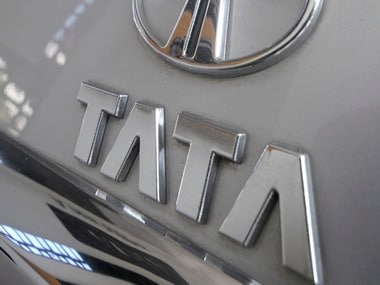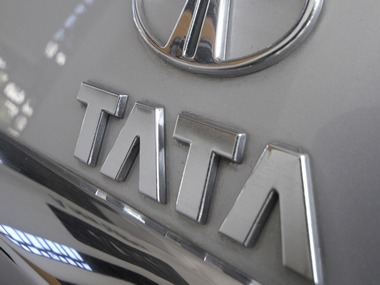On the face of it there is much in common between the automotive industry and aircraft manufacturing. Both are notoriously cyclical businesses whose struggles with managing their demand, production and workforce provide much fodder for journalists worldwide. Yet, in the hundred years that both industries have matured globally, few car-makers have gotten into making planes. Aerospace has remained a specialised industry with a handful of global players; few auto-groups have even tried their hands at it.
One reason is the huge cash-flows needed. To become a major aerospace player, either an OEM or Tier 1 manufacturer, an entrant would need to have the appetite to invest billions of dollars, and the patience to handle long payback periods. It is no surprise that Airbus and Boeing - the two largest players, still rely heavily on their respective governments.
[caption id=“attachment_74246” align=“alignleft” width=“380”]
 The Tatas have opted to create joint ventures with global aerospace heavyweights based on specific aircraft programs. Reuters[/caption]
The Tatas have opted to create joint ventures with global aerospace heavyweights based on specific aircraft programs. Reuters[/caption]
Against this global backdrop, the story in India is evolving along a different trajectory. Two of the country’s strongest auto-makers have ventured into the production of planes, aero structures and components. Starting almost from scratch about six years ago, about a dozen companies from the Tata group and the aerospace arm of M&M have been-separately-building their competence. Activity is now picking up and is straddling the gamut, from producing large parts such as the fuselage (chassis) and empennage (tail section) to design, technology and electronics. The vision is tinted with ambition as both have their eyes set on the whole shebang, right from the design to the manufacture of airplanes.
The build-up has involved acquiring foreign companies with expertise and forging JVs to contract manufacture for big-name global partners. Both have used their auto-manufacturing expertise to launch them into civil and defence aerospace.
It is expected that 2014-15 could be the tipping point. Between Mahindra’s small aircraft sales and components business, the company is looking to touch revenues of $300 million in 3 to 4 years. The Tatas are more advanced, with at least three manufacturing facilities certified and producing components, and more on the anvil. Success can only come from building capability and scale. In international terms both are still on Tier-2 or -3 levels, but they could be on the cusp of bigger things.
Tatas and M&M Aero strategy: A study in contrast
Though both have their eyes trained on aerospace and offset related business from India and overseas, the Tata group and M&M are on two completely contrasting tracks to get there. Here are a few key differences:
Structure: In the Tata group, activity is spread across more than a dozen companies. Individual companies drive the business, with strategic support and funding from holding company Tata Sons-but there is hardly a unified approach or grand plan.
The Mahindra approach is less ambitious and simpler. All aerospace-related activity resides in two entities- Mahindra Aerospace for the manufacturing, sale and marketing of small aircraft and components, and Tech Mahindra for the design/IT-related work.
Generic versus Specific: The Tatas have opted to create joint ventures with global aerospace heavyweights based on specific aircraft programs. The JV with Sikorsky is for the S-92 helicopter, the one with Agusta Westland is for the AW119ke. The Tatas obviously would like to be a tier-1 manufacturer, aiming at both defence and civil aerospace. In contrast, the Mahindra Aerospace facility at Bangalore is a generic shop–the company is pitching for orders from as many international OEMs as it can.
Both approaches have their pluses and minuses. The advantage of being allied to a single programme allows the Tatas to leapfrog to complex parts and machinery, using know-how from well-established partners. It provides credibility that is very essential to get more contracts in the global market. Since, the facilities are put up with long-term commitments to buy from the Tatas- business is assured to some extent. The big risk is that the fortunes of the joint ventures are tied to how well the aircraft does. Aircraft programmes can be set back for a variety of reasons, like in the AgustaWestland case.
Global lessons
Compared to other companies, even those in emerging economies, the two Indian groups are still in the early stages of the aerospace business. But there are enough lessons to draw from companies that have developed from naught in less than a decade. In Turkey, Alp Aviation and Kalekalip are two great examples of how the Turkish are exploiting labour arbitrage, offsets and government funding to get into high-end aerospace manufacturing. Incidentally, Alp was originally an edible oil company while Kalekalip was involved in construction. Alp is now the third largest Turkish defence exporter. At the Paris airshow last year, engine maker Pratt & Whitney awarded manufacturing work for critical components of the Joint Strike Fighter’s (JSF) F135 engine system to Alp Aviation and Kalekalip.
In India, manufacturers are struggling to work with the DGCA for certification. The Mahindra 5-seater plane, for instance, had to be certified in Australia, because the DGCA did not have the capability to certify it.
A clear government policy that says a certain percentage of a foreign vendor’s offset obligation should compulsorily be met through investments in local manufacturing could lead to billions of dollars of investments. But even after several revisions to the defence procurement policy later, there is no evidence of any such benefit to Indian industry. For first movers, the Tatas and Mahindras, progress has been not because, but despite, the government.
Read the full story of the Tata and Mahindra group’s aerospace dreams here .
Cuckoo Paul is Associate editor at Forbes India. She spends most of her time looking for interesting business stories. She is biased towards tales of dirty, old-style, brick-and-mortar companies in the oil & gas, power and heavy engineering business. Apart from refining margins, her other obsession is with things airborne. She learnt flying on a Piper Super Cub and follows commercial and general aviation keenly. She is also on the board of Childfund India, an NGO that supports about 70,000 children in the country.
)